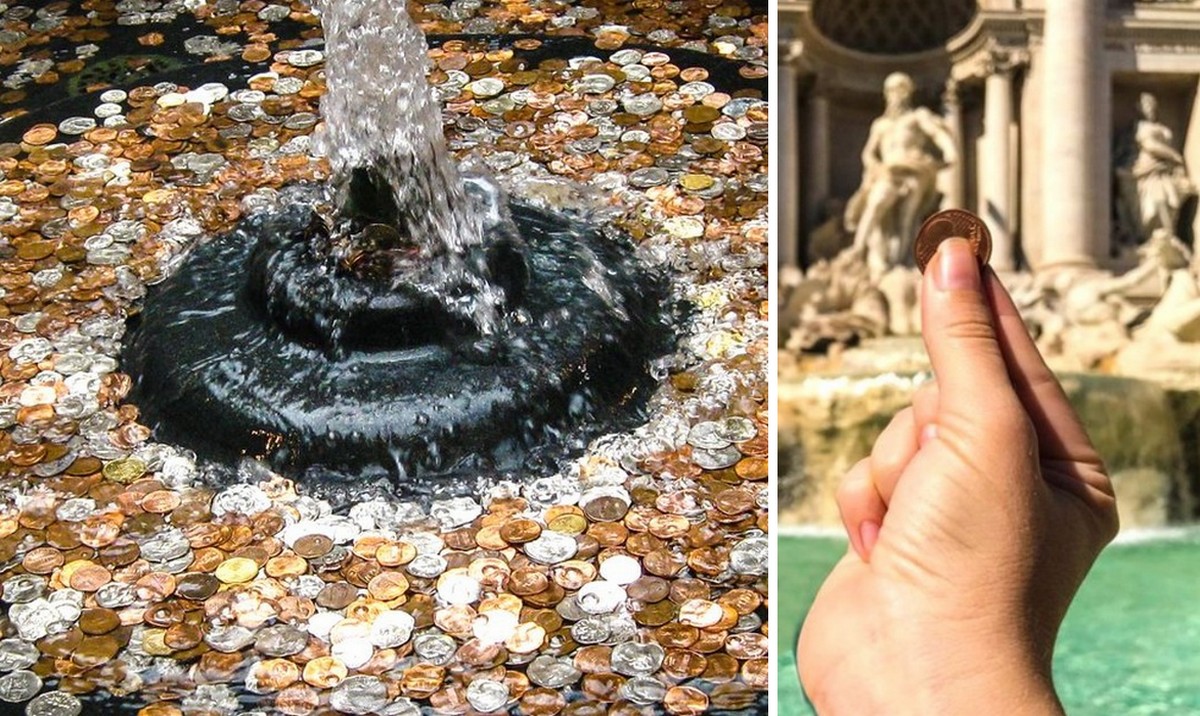More than 1 million euros – at the current exchange rate, this is more than 40 million hryvnias – this amount is annually thrown by tourists into the famous Italian Trevi Fountain in Rome. Let’s figure out what happens with this money.
Every year, a gigantic sum of money falls into the water of the largest fountain in Rome and Italy, which is impressive for the 18th century monument. For more than a decade, windfalls collected by the city team every few months have contributed to a very good cause — charity, NBC reported.
Why do people throw coins into the fountain?
The Trevi Fountain, built between 1732 and 1762, is one of the most iconic monuments of the “eternal city”. It was designed by Mykola Salvi and represents the taming of waters. Against the background of the monumental facade with giant Corinthian pilasters, the river God Ocean sits on a chariot made of shells pulled by sea skates. While one of the creatures appears docile, the others stand wildly on tiptoes, representing the contrasting characters of the sea.
According to tradition, tourists who visit the famous city are always in a hurry to see this architectural object with their own eyes. And then they stand with their backs to the monument and throw a coin over their left shoulder into the water with their right hand. This ritual became famous thanks to the 1954 film “Three Coins in the Fountain” and is supposed to guarantee the tourist’s return to the “eternal city”.
How much money is caught?
Every day, around 3,000 euros of small change enters the Trevi Fountain. It turns out that up to 1.5 million euros of its water is thrown out annually.
What happens to this money?
Tourists are strictly prohibited from immersing their hands and feet in the iconic tourist object. A huge fine can even be “caught” for a violation, so travelers are not allowed to recoup part of the money spent on their own trip, no matter how much they want it.
Money is collected by special services. Several times a year, the city government sends a team of workers to pull the numerous coins out of the water. Workers use brushes on the end of long poles to gather the coins into piles, then use a suction hose to pull them out. The coins are then bagged under police supervision.
Back in 2001, the mayor of the tourist town decided that the collected money should be given to a local charity. Good goals, in his opinion, were intended to discourage tourists and local people from mining coins for their own enrichment. However, this did not help much, then fines for touching the famous Trevi Fountain came to the rescue.
Since then, the coins that fall into the fountain have been donated to the Roman Catholic charity Caritas every year. It was reported that this amount now makes up 15% of its annual budget. The company funds projects that help the poor in Rome, funding canteens, homeless shelters, free supermarkets and other projects. The money also goes to the maintenance of a complex on the outskirts of Rome, which houses a home for the elderly, a canteen and a dentist for the city’s residents who live in poverty.

